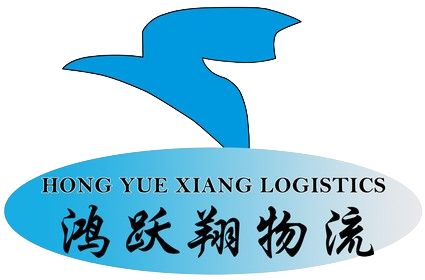Новости
Роль внутренней логистики в оптимизации цепочек поставок
Важность внутренней логистики в управлении цепочками поставок
Внутренняя логистика находится в центре эффективных операций цепочки поставок, поскольку она связана с тем, как товары перемещаются внутри компании. Речь идет об управлении уровнями запасов, доставке материалов со склада на производственные линии и перемещении продукции между различными участками одного и того же предприятия. Когда эти внутренние логистические процессы работают согласованно, компания в целом функционирует намного эффективнее. Подумайте сами: если сырье недоступно в нужный момент, производство останавливается. Исследования Совета профессионалов в области управления цепочками поставок (Council of Supply Chain Management Professionals) показывают, что компании, которые успешно управляют внутренней логистикой, могут улучшить операционную эффективность на 30%. Хорошее логистическое планирование направлено не только на простое перемещение грузов — оно также влияет на такие аспекты, как безопасность сотрудников и графики технического обслуживания, что делает логистику одним из тех скрытых факторов, которые определяют, сможет ли компания оставаться конкурентоспособной или она отстанет.
Внутренняя логистика играет ключевую роль в обеспечении бесперебойного перемещения материалов по складам и своевременной отгрузке продукции. Когда эти системы работают эффективно, они предотвращают раздражающие задержки, которые вызывают негативные последствия по всей цепочке поставок. Грамотное управление логистикой гарантирует согласованность действий между различными отделами. Компаниям необходимо находить оптимальный баланс между временем, затратами и объемом продукции, доступной в каждый момент времени. В случае отсутствия такой координации возникают узкие места, начиная с погрузочных платформ и заканчивая зонами отгрузки. Эти проблемы замедляют производство и снижают прибыль. Вот почему умные компании серьезно инвестируют в инфраструктуру внутренней логистики, которая становится основой повседневных операций.
Когда компании начинают серьезно подходить к оптимизации внутренней логистики, они обычно отмечают значительные улучшения в работе своих цепочек поставок. Сокращение длительных периодов ожидания между заказами и обеспечение точности процессов позволяет экономить деньги и более эффективно использовать доступные ресурсы. Основное преимущество заключается в том, что компания может намного быстрее реагировать на потребности клиентов, чем раньше. Эффективное управление логистикой также дает возможность внедрять перспективные подходы, такие как методы бережливого производства. Эти методы способствуют поддержанию высоких стандартов обслуживания, не требуя значительных расходов. Компании, которые успешно справляются с организацией своей внутренней логистики, в целом получают более высокий уровень удовлетворенности клиентов и выделяются среди конкурентов в своей отрасли.
Ключевые компоненты эффективной внутренней логистики
Управление складом и контроль запасов
Хорошее управление складом играет ключевую роль в поддержании порядка и эффективного перемещения товаров внутри складского помещения. Когда склад работает без сбоев, сокращается время, затрачиваемое на обработку грузов, и повышается точность учета остатков, что положительно сказывается на всей цепочке поставок. Внедрение умных методов управления запасами имеет большое значение. Например, метод JIT (Just-In-Time) или автоматизированные системы позволяют компаниям значительно лучше контролировать местоположение своих товаров в каждый момент времени. Результатом становится снижение риска избыточного запаса или, наоборот, полного отсутствия товара на складе. Таким образом становится возможным поддержание оптимального уровня запасов. Также широко используется метод ABC-анализа. Он предполагает классификацию товаров по степени их важности. Такой подход обеспечивает доступность жизненно важных продуктов и снижает ненужные расходы на хранение менее значимых позиций.
Внутренний транспорт и обработка материалов
Перемещение товаров внутри склада или фабрики — это важная часть, которая обеспечивает бесперебойную работу. Независимо от того, идет ли речь о работающих конвейерных лентах, вилочных погрузчиках, быстро перемещающихся между проходами, или о рабочих, вручную переносящих товары из точки А в точку Б, правильная организация транспортировки играет большую роль в повседневной эффективности. Когда компании тратят время на подбор подходящего оборудования для обработки материалов и регулярно проводят техническое обслуживание, они отмечают значительные улучшения в безопасности рабочего места и рост показателей производства в целом. Качественное оборудование просто служит дольше без поломок, значительно снижает риск аварий и обеспечивает более быстрое перемещение товаров по объекту по сравнению с устаревшими или плохо обслуживаемыми аналогами. И, конечно, нельзя забывать о важности правильного проектирования планировки помещения. Умное распределение маршрутов может устранить раздражающие замедления, возникающие, когда грузовые отправки застревают в ожидании на углах или перекрестьях, гарантируя своевременную доставку материалов к месту назначения, а не вызывая ненужные задержки в производственных циклах.
Роль технологий в оптимизации внутренней логистики
Технологии стали ключевым элементом модернизации внутренней логистики в XXI веке. Когда компании внедряют такие решения, как системы управления складом (WMS), программное обеспечение для планирования ресурсов предприятия (ERP) и небольшие роботизированные транспортные средства (AGV), они отмечают значительное улучшение в повседневных логистических операциях. Подключение датчиков IoT и искусственного интеллекта также кардинально меняет ситуацию. Эти инструменты позволяют компаниям отслеживать происходящее в режиме реального времени и собирать огромные объемы данных, которые наглядно показывают текущий уровень запасов и участки, где процессы можно улучшить. Интересно, что технологии объединяют все отделы, позволяя им наладить общение друг с другом вместо работы в изоляции. Такая интеграция делает всю операционную деятельность более слаженной, поскольку информация свободно циркулирует по компании, помогая менеджерам принимать более обоснованные решения быстрее, чем раньше.
Преимущества оптимизации внутренней логистики
Сокращение затрат и оптимизация ресурсов
Когда компании лучше управляют своей внутренней логистикой, они часто достигают значительной экономии и более эффективно используют имеющиеся ресурсы. Повышение скорости оборачиваемости запасов при одновременном снижении повседневных расходов означает, что компании тратят меньше денег на заработную плату персонала и аренду складских помещений. Вся операция работает эффективнее, когда пространство, время и человеческие ресурсы используются с пользой, без значительных потерь усилий. По данным отраслевых исследований, компании, которые сосредоточены на оптимизации этих процессов, могут сократить эксплуатационные расходы примерно на 20%. Такая экономия быстро накапливается по всем отделам и положительно сказывается на конечных финансовых результатах.
Повышение операционной эффективности и производительности
Когда компании оптимизируют свои внутренние процессы, они обычно отмечают повышение эффективности и увеличение объема выполненной работы. Возьмем, к примеру, логистические операции — когда они должным образом налажены, бизнес часто замечает, что процессы в системе ускоряются, а продукты проводят меньше времени в циклах. Преимущества выходят за рамки одного лишь ускорения операций. Благодаря тому, что все работает слаженнее, отделы начинают более рационально использовать имеющиеся ресурсы, будь то складские площади или рабочее время сотрудников. При этом работники больше не вынуждены постоянно спешить, чтобы наверстать упущенное. Исследования показывают, что компании, которые серьезно сосредоточены на оптимизации логистики, могут повысить производительность на 15–25%. Хотя эти показатели могут варьироваться в зависимости от особенностей отрасли, большинство менеджеров подтвердят, что устранение лишних этапов обязательно дает результат в долгосрочной перспективе как для финансовых показателей, так и для повседневных операций.
Повышение удовлетворенности клиентов и точности доставки
Когда компаниям удается наладить внутреннюю логистику, клиенты становятся счастливее и получают заказанные товары без проблем. Своевременная доставка продукции и поддержание высоких стандартов обслуживания со временем формируют настоящее доверие между бизнесом и его клиентами. Когда заказы точно соответствуют тому, что было приобретено, количество ошибок уменьшается, а поставки прибывают вовремя и стабильно. Это подтверждается и цифрами: многие компании, которые наладили логистические процессы, отмечают рост удовлетворенности клиентов на 30% по сравнению с теми, кто все еще сталкивается с неэффективностью систем. Таким образом, для любого бизнеса, стремящегося к успеху, решение логистических задач — это не просто вопрос эффективности, а способ построения долгосрочных отношений с клиентами, которые ценят возможность получить именно то, что хотят, когда им это нужно.
Проблемы при внедрении внутренней логистики
Управление колебаниями спроса клиентов
Изменения в потребностях клиентов остаются одной из самых больших проблем для всех, кто работает во внутренней логистике в наши дни. Бизнес постоянно сталкивается с сезонными колебаниями и внезапными скачками спроса, которые никто не предвидел, что делает крайне сложным поддержание нужных уровней запасов и правильное распределение персонала. Именно поэтому многие организации сейчас рассматривают более гибкие подходы к управлению логистическими системами. Например, инструменты искусственного интеллекта действительно могут внести существенную пользу в прогнозировании дальнейших событий. Когда компании начинают использовать эти умные технологии, они становятся лучше подготовленными к резким колебаниям спроса, что помогает избежать сбоев во всей сети цепочки поставок.
Обслуживание оборудования и адаптация к технологическим изменениям
Для бесперебойной работы логистического оборудования требуется регулярное техническое обслуживание, чтобы избежать дорогостоящих поломок в будущем. Это означает, что компаниям необходимо вкладывать время и деньги в надлежащие программы обучения и профилактическое обслуживание. Технологическая среда также постоянно быстро меняется, поэтому работникам приходится постоянно осваивать новые навыки и адаптироваться к этим изменениям, что создает дополнительное давление на и без того ограниченные бюджеты и персонал. Умные компании находят способы интеграции передовых инструментов в текущие системы, не выбрасывая всё старое и не начиная всё с нуля. Возьмем, к примеру, искусственный интеллект и автоматизацию — они обещают значительное улучшение складских операций, но интеграция их в работу со старыми системами — это не просто подключить и использовать. Это требует тщательного планирования, тестирования различных подходов до тех пор, пока всё не будет работать слаженно по всем отделам.
Балансирование затрат с операционными потребностями
Снижение затрат, при этом правильное выполнение задач остается проблемой для большинства менеджеров по логистике день за днем. Компании должны сокращать расходы, но не могут позволить себе ухудшить качество или рисковать ненадежным предоставлением услуг. При поиске способов экономии менеджеры должны задавать себе вопрос: приведет ли эта экономия в долгосрочной перспективе к ухудшению операций. Экологичная логистика также приносит выгоду несколькими способами. Многие компании обнаруживают, что внедрение экологичных видов транспорта или оптимизация планировки складов позволяет сэкономить средства без потери эффективности. Некоторые компании даже отмечают улучшение удовлетворенности клиентов после внедрения более рациональных систем маршрутизации или инвестиций в транспортные средства с низким расходом топлива. Поиск баланса между бюджетными ограничениями и операционными требованиями — это то, что не дает спать спокойно профессионалам в сфере логистики, но правильный подход играет решающую роль в сохранении конкурентоспособности на длительный срок.
Стратегии успешного управления внутренней логистикой
Внедрение анализа данных для принятия лучших решений
Управление логистикой получает значительный импульс от анализа данных, когда компании начинают обращать внимание на цифры, стоящие за их операциями. Когда предприятия отслеживают тенденции времени доставки, маршрутов перевозок и эффективности складов, они получают реальное понимание того, что работает хорошо, а где есть пространство для улучшений. Программные средства анализа помогают лучше прогнозировать спрос, поддерживать сбалансированный уровень запасов в разных локациях и обеспечивать распределение ресурсов там, где они наиболее востребованы. Например, при планировании транспортировки многие склады сообщают о сокращении расходов на топливо на 15% после внедрения интеллектуальных алгоритмов маршрутизации, основанных на исторических данных о трафике. Согласно исследованию McKinsey за прошлый год, компании, использующие искусственный интеллект и аналитику в своих цепочках поставок, зафиксировали одни из самых значительных сокращений операционных расходов по сравнению с традиционными методами, что демонстрирует высокую эффективность качественного анализа данных в логистических операциях.
Обучение и развитие персонала логистики
Инвестиции в обучение персонала играют решающую роль при решении сложных логистических задач. Постоянные возможности для обучения позволяют сотрудникам сферы логистики быть в курсе последних технологий и отраслевых методов, что помогает им не отставать от изменений в данной области. Качественное обучение дает сотрудникам практические навыки, необходимые для выполнения их работы, повышает удовлетворенность трудом и способствует удержанию квалифицированных кадров на длительный срок. Регулярное обновление знаний позволяет сотрудникам эффективно работать с такими средствами, как автоматизированные системы или инструменты анализа данных, которые сегодня становятся стандартными. Такой практический подход помогает решать реальные проблемы, с которыми компании сталкиваются ежедневно при управлении цепочками поставок и обеспечении бесперебойной работы.
Сотрудничество между отделами для бесшовной работы
Важно, чтобы различные отделы работали вместе, когда речь идет об эффективных логистических операциях и своевременной передаче информации туда, где она необходима. Когда команды регулярно взаимодействуют между отделами, все обычно находятся на одной волне относительно целей, что облегчает решение проблем и сокращает раздражающие недоразумения, ведущие к ошибкам. Исследования показывают, что компании, которые обеспечивают хорошее межотделенческое сотрудничество, демонстрируют лучшие результаты в логистике, поскольку рабочие процессы становятся упорядоченными, а узкие места исчезают быстрее. Когда операции внутри организации работают без сбоев, вся логистическая система становится эффективнее, что помогает компаниям успешно управлять цепочками поставок без обычных трудностей.
Рекомендуемые продукты
Горячие новости
-
Ключевой способ доставки грузов, соединяющий мир
2024-01-16
-
Продолжающееся развитие нашей компании грузовых перевозок
2024-01-16
-
Важность транспортной компании
2024-01-16

 EN
EN
 AR
AR
 FR
FR
 DE
DE
 PT
PT
 RU
RU
 ES
ES
 TR
TR
